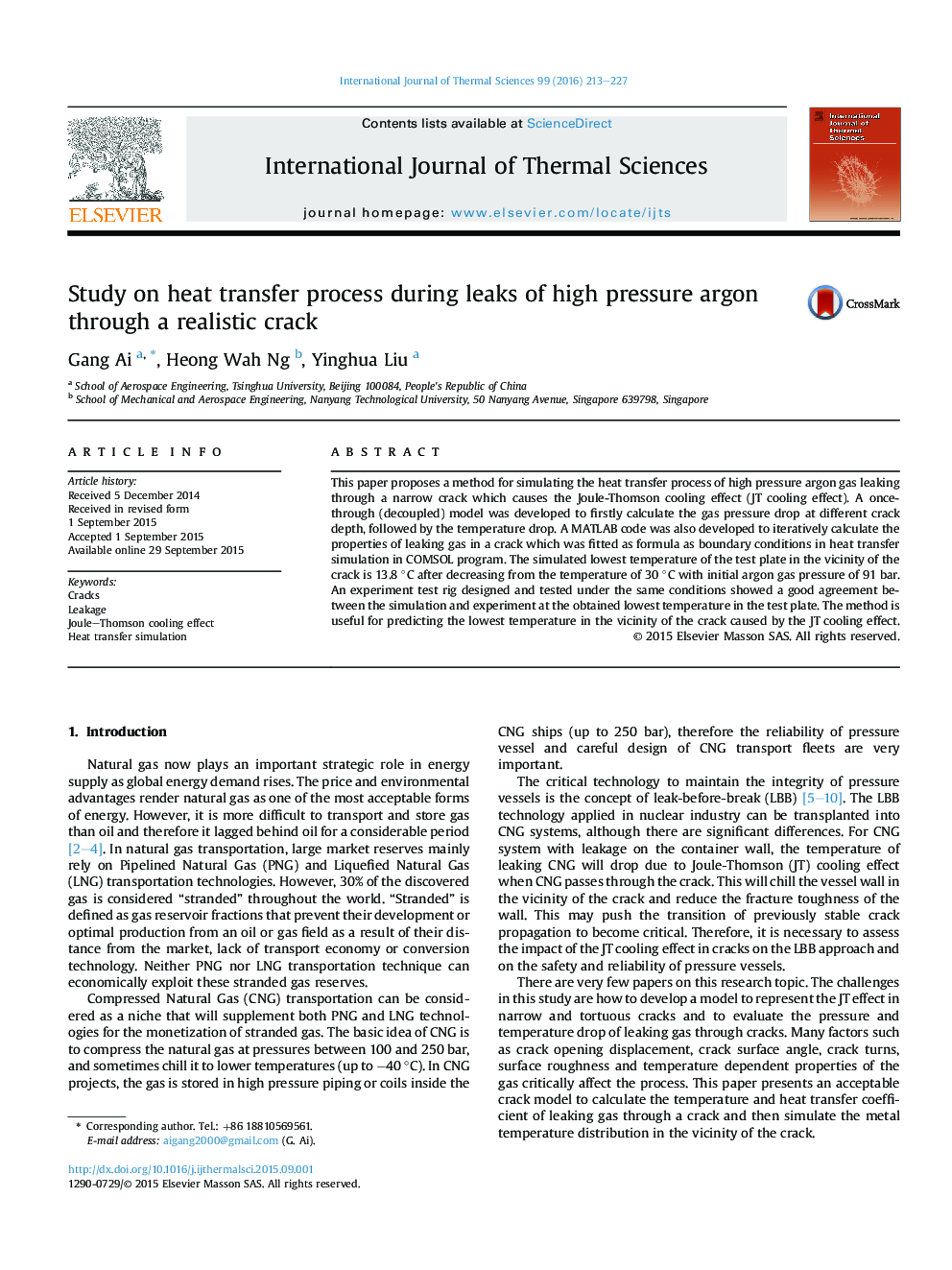| Article ID | Journal | Published Year | Pages | File Type |
|---|---|---|---|---|
| 669240 | International Journal of Thermal Sciences | 2016 | 15 Pages |
•A new two-stage numerical method proposed to solve the heat transfer problem caused by the Joule-Thomson (JT) cooling effect.•Development of a new mathematical calculation model to apply the JT cooling effect into the gas leaking through a through-wall crack.•Integration of the relevant parameters of the JT cooling effect to heat transfer analysis.
This paper proposes a method for simulating the heat transfer process of high pressure argon gas leaking through a narrow crack which causes the Joule-Thomson cooling effect (JT cooling effect). A once-through (decoupled) model was developed to firstly calculate the gas pressure drop at different crack depth, followed by the temperature drop. A MATLAB code was also developed to iteratively calculate the properties of leaking gas in a crack which was fitted as formula as boundary conditions in heat transfer simulation in COMSOL program. The simulated lowest temperature of the test plate in the vicinity of the crack is 13.8 °C after decreasing from the temperature of 30 °C with initial argon gas pressure of 91 bar. An experiment test rig designed and tested under the same conditions showed a good agreement between the simulation and experiment at the obtained lowest temperature in the test plate. The method is useful for predicting the lowest temperature in the vicinity of the crack caused by the JT cooling effect.
